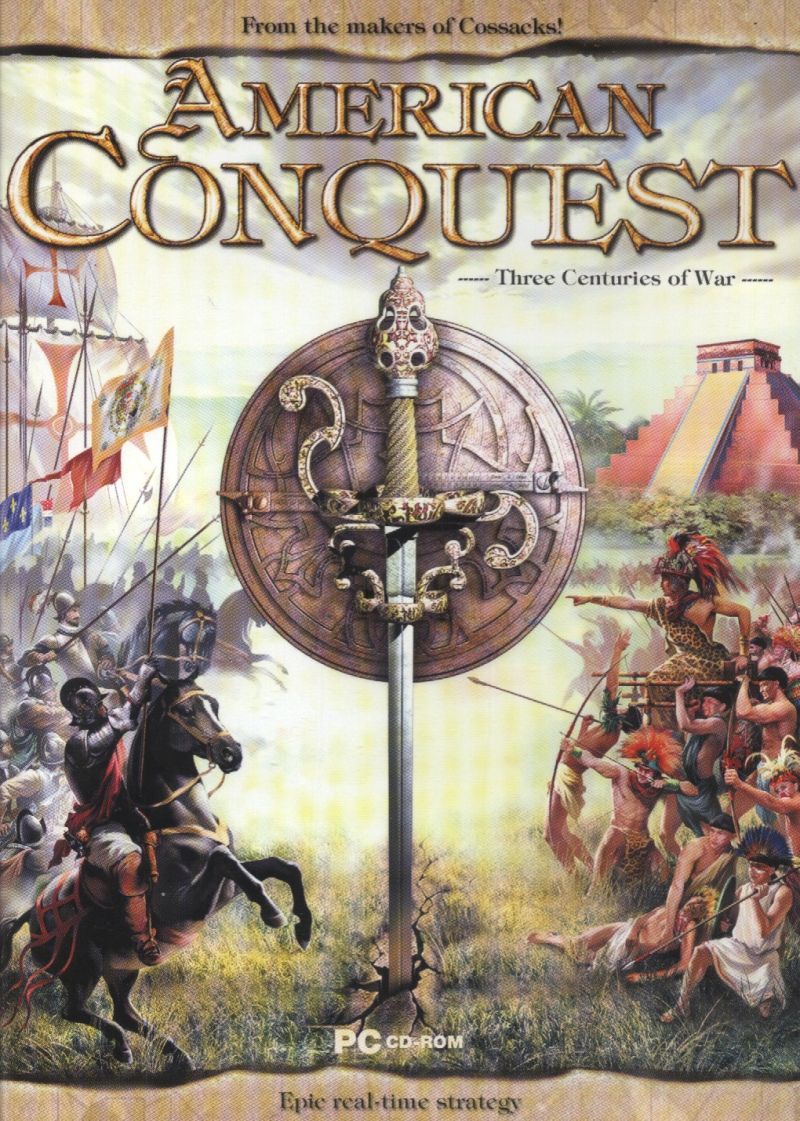

Introduction
CDV invited me over to see a preview build of the new game from GSC Game World, American Conquest. When I originally arrived, I wasn’t exactly sure what I’d see, as although I knew the game was an RTS game, I didn’t know much else about it.
Once I sat down and the presentation began, it quickly became obvious that this was a game that was going to capture my attention for quite some time, for all the right reasons.
American Conquest is an RTS game in pretty much the same mould as most other similar games, but it is in the details that the game really stands out from the rest. Developed by the same company behind the seminal Cossacks (a game even I’ve played from time to time), American Conquest takes the period in history between Christopher Columbus’ discovery of the new world, and the American War of Independence some three hundred years later. The aim of the single player game is, like most RTS games, to complete each scenario as presented, however each scenario is designed to be as close to history as possible, and each scenario comes with a mini history lesson. It was gratifying to see that the very first scenario – based around the initial landing of colonists from the Santa Maria – was introduced with a brief history lesson, which, for a change, did not perpetuate the common myth that Christopher Columbus actually discovered America.
While it is recognised that the vast majority of players will just jump into the game without reading through the introductory text, it’s still a nice touch.
GSC Game World has spent a lot of time on the graphics engine for this game. It features a full 3D engine, and each vertex can support up to 32 different textures, making this game one of the most beautiful RTS games around. Each of the units is individually animated with a complete range of actions, and each unit has been modeled to be as historically accurate as possible. There are twelve different nations and tribes, each with their own distinctive – and historically accurate – clothing, headwear, weapons and buildings.
Units
Each nation and tribe within the game has a number of distinct units. We were shown the Spaniards, the nation you will play the most, especially in the single player game. The basic unit in the game is the Peasant. The peasant is used to build the various buildings available, collect wood, work the mines, till the fields and so on. You can also take peasants and train them to be warriors.
A lot of work has been done is defining how each combat unit acts as well. For example, Spanish Musketeers can no longer shoot through units on their own side, and also take a long time to reload their muskets. The same holds true for more advanced units, and the decision of which type of attack to use is also based on the units local environment. The mounted Spanish Cavalier carries two flintlock (or single-shot) pistols, and will use these in an attack if the enemy is a certain distance away. Once these two shots have been used up, the Cavalier will always use their sword (or melee) attack.
Morale
A lot of American Conquest is about fighting. GSC Game World have implemented a very complex system of morale within the game. Each individual unit has it’s own morale level which is affected by what that unit can see in front of them, what they can hear behind them, and actions going on around them. For example, if an individual pike man suddenly finds the units on either side of them have been killed and they are being faced down by a huge horde of enemy, their morale may be reduced to the stage where they actually turn around and run away.
Conversely, the enemy’s morale can be affected by the arrangement of troops you place before them, and the style of attack you make. For example, using mounted troops against the native Maya may scare large portions of them away; the Mayans having (historically at least) never seen mounted troops.
You can have a direct impact on the morale not only on the enemy but also on your own troops through careful deployment of organised units. Whilst early in the game such tactics are not necessary, later, and especially during Multiplayer, the effect of morale will have a big impact on the outcome of battles. A small, highly motivated division may defeat a much larger force if the enemy morale is particularly low, even if your own army is apparently much weaker.
Whilst the Morale system isn’t complex enough to include reactions to specific tactics, or even to the movement of troops into a flanking, counter-attacking position, it does afford enough flexibility to mimic the behaviour of large groups of individual units, and how panic can spread.
The Morale system is a very complex one, but does afford moments of levity whilst playing the game. The reaction of opposition units when they are scared is expressed not only by their running away, but also by textual expressions printed above their heads, like “they’ll kill us all!” and “I’m going to die!”


INFORMATION ABOUT THIS CONTENT:
Originally posted: news0r.com (LINK) (ARCHIVED-1) (ARCHIVED-2)
Date of publish: 04.01.2003
Author: cro
Language of publish: english